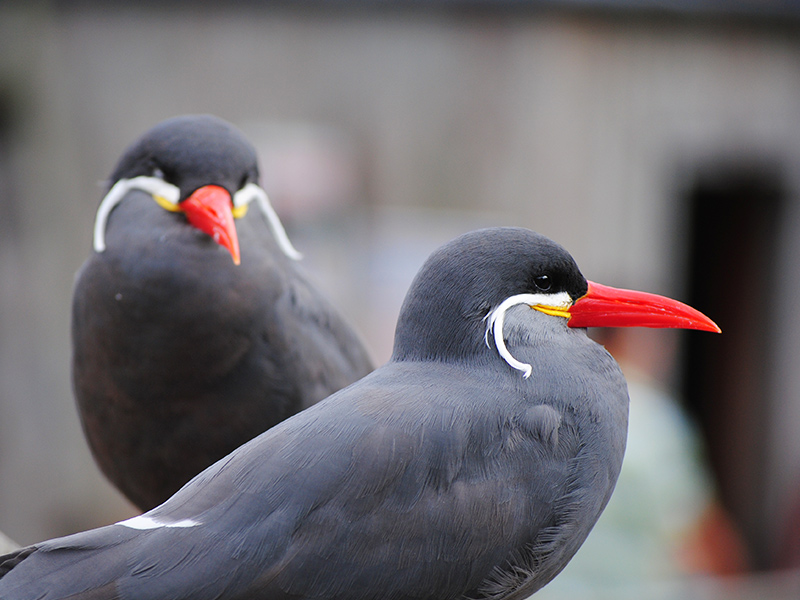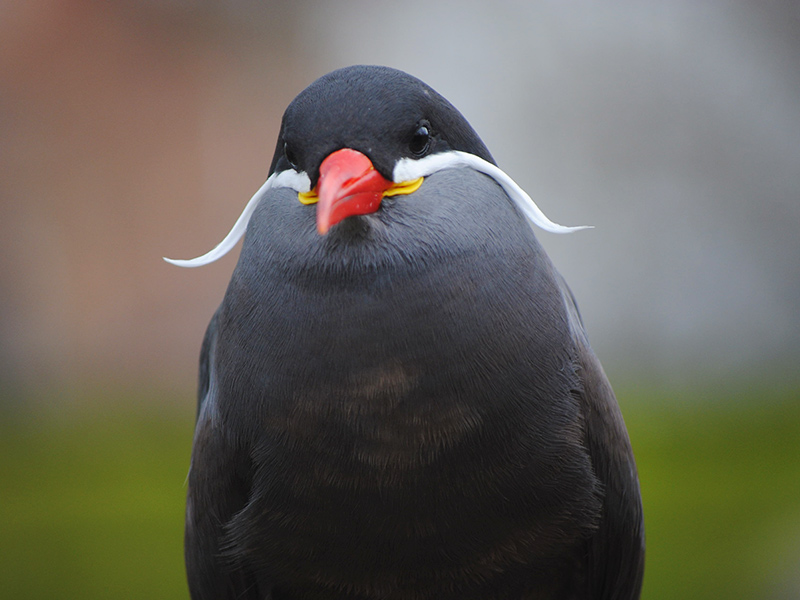Save up to 30% on tickets when you buy online!


Inca Tern










This uniquely plumaged bird breeds on the coasts of Peru and Chile, and is restricted to the Humboldt Current. Inca terns can be identified by their dark grey body, white moustache and red-orange beak and feet.
These birds build their nests in suitable fissures, burrows, caves and cavities, sometimes the old nest of a Humboldt Penguin. They feed, often in large flocks, on small schooling fish found in the cold water of the Humboldt Current. One or two eggs are incubated for about four weeks, and the chicks leave the nest after seven weeks. Birds feed by plunge diving for fish.
They are listed as Near Threatened. One of the threats they face in the wild is from the reduction of nesting habitat caused by guano harvesting. However, Inca Terns are very flexible and successful in using any kind of coverage (natural or artificial) for nesting. Reduction of anchovy stocks due to commercial fishing may also limit population size.
Get the best price!